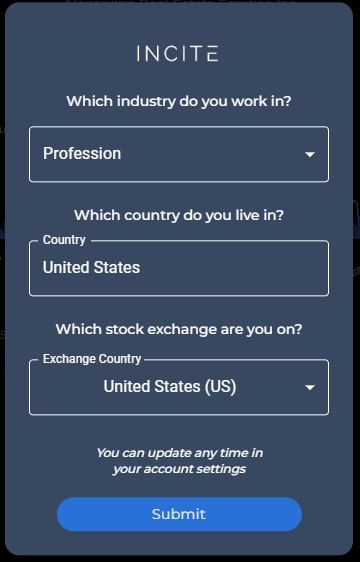20 Excellent Advice On Choosing AI Stock Trading Platform Sites
20 Excellent Advice On Choosing AI Stock Trading Platform Sites
Blog Article
Top 10 Tips To Assess The Accuracy & Performance Of Ai Trading Platforms For Predicting Stocks
Assessing the accuracy and performance of AI analysis and stock prediction trading platforms is crucial to make sure you're using an AI tool that will provide reliable insights and predictions. Here are ten top suggestions to evaluate these platforms.
1. Backtesting Results
What to look out for: Determine whether the platform provides backtesting to test how its predictions would've performed with the past data.
The reason it is important: Backtesting helps to validate the AI models ' accuracy by comparing their predictions with real-world outcomes.
Find platforms that can be customized backtesting parameters.
2. Real-time Performance Tracking
What to look for Check the performance of the platform in real-time market conditions.
What's important It is because the platform's real-time performance is a better indicator of its performance than relying solely on historical backtesting.
Tip : You can sign up for an account demo, or an evaluation version of the software to keep track of live movements in real time and compare it to your forecasts.
3. Prediction Error Metrics
What to Watch Out For to determine the accuracy of predictions by using metrics such as the Mean Absolute Error(MAE) and the Root-Mean Squared Error(RMSE) or Rsquared.
What is the significance of these measures are a way to gauge how closely predictions are in line with the actual results.
Tip: Platforms which openly disclose these metrics are generally more transparent and trustworthy.
4. Winning Rate and Success Ratio
What to look out for: Check out the rate of winning on the platform that is the percentage of forecasts that are correct. Also check its success ratio (the profit of trading using predictions).
Why is it important What is important: A high win percentage and success rate indicates better precision in forecasting as well as potential profitability.
You should be wary of platforms which boast of having a very high winning rate (e.g. 90 %+),) because the system cannot guarantee 100 100% success.
5. Benchmarking against Market Indices
What to Look for: Examine the predictions and performance of the platform with major market indices.
Why it is vital because it will help determine whether this platform outperforms (or is underperforming) the overall market.
Tip: Do not only focus on short-term gains, but also a consistent performance over a longer time.
6. Consistency in Market Conditions
What to look for What to look for: See what the platform's performance is under various market conditions.
Why is it Important A solid system will be able to perform well, not just in favorable market conditions but as well in any other circumstance.
TIP: Test the predictions of the platform in volatile times or during market declines.
7. Transparency in Methodology
What to look for: Learn about the AI algorithms and models that are used (e.g. neural networks, reinforcement-learning).
Why is it important Transparency can help you assess the reliability and scientific rigor.
Avoid platforms using "black box models" that don't explain how predictions can be generated.
8. User Reviews & Independent Testing
What to look for: Read reviews from users, and also independent testing and third-party evaluations.
What is important The independent testing and reviews give an objective view of the reliability of the platform.
Tip: To find out what other users are saying about the service, visit forums such as Reddit copyright, and financial blogs.
9. Risk-Adjusted Returns
What to Look For To evaluate the performance of your platform using risk-adjusted indicators like the Sharpe Ratio or Sortino Ratio.
Why it is Important: This metric accounts for the risk that is taken to earn returns. It offers the most complete picture of the performance.
Sharpe ratios (e.g. higher than 1) suggest a higher risk-adjusted rate.
10. Long-term track record
What to look for Take a look at the performance of the platform over a long period of time (e.g. over three or five years).
What is important Why it matters: Long-term performance is an accurate indicator over short-term outcomes.
Tip: Avoid platforms that only showcase quick-term successes or results that are cherry-picked.
Bonus Tip Test with a Demo account
Try a demo account or free trial to test the predictions of the platform in real-time, without putting your money into money. You can evaluate the accuracy and performance of the system firsthand.
With these suggestions You can evaluate the accuracy and performance of AI analysis and stock prediction platforms, ensuring you choose one that matches your investment goals and risk tolerance. Never forget that no platform will be the perfect one. Combining AI insights with your own research is the best method to choose. See the best your input here for ai investment platform for more tips including using ai to trade stocks, ai investing, ai stocks, ai investing app, investment ai, ai for stock trading, ai for investing, options ai, ai for trading, ai for stock predictions and more.
Top 10 Tips For Assessing The Risk Management Of Ai-Based Stock Trading Platforms
Any AI stock-predicting/analyzing trading platforms must include risk management, which is essential to protecting your capital and minimizing losses. Platforms with robust risk management features can assist you in navigating turbulent stock markets and make an informed decision. Below are the top 10 tips to evaluate the risk management capabilities of these platforms.
1. Review Stop-Loss Features and Take-Profit Features
Customizable Levels: Make sure the platform allows you to define your own stop-loss levels as well as goals for taking profits in your strategies or trades.
Examine the platform to determine whether it is compatible with trailing stopped which adjusts automatically as the market shifts your way.
You should check whether there are stop-loss options that can assure that your position will be closed at the specified rate, even if markets fluctuate.
2. Calculate Position Size Tools
Fixed amount. Be sure to have the option of defining the size of your positions in terms of a fixed dollar amount.
Percentage: Determine whether you can define your position sizes as percentages of the total value of your portfolio. This will help you manage risk in a proportional way.
Risk-reward Ratio: Verify that the platform supports setting individual risk-reward levels.
3. Make sure you are receiving assistance with diversification.
Multi-asset Trading: To diversify your portfolio of investments, be sure that the platform you choose can handle trading in a variety of asset classes.
Sector allocation: Find out if the platform provides tools to monitor and manage the exposure of sectors.
Geographic diversification. Check if the platform can trade internationally and spread geographic risks.
4. Controlling leverage and margins
Margin requirement: Verify that the platform clearly discloses any margin requirements for leveraged trades.
Limits on leverage: See whether the platform permits you to set limits on leverage to manage the risk exposure.
Margin Calls: Ensure that the platform is sending timely notifications of margin calls in order to avoid account liquidation.
5. Assessment and reporting of risk
Risk metrics: Ensure whether your platform contains key risk metrics including Value at Risk, Sharpe ratio and Drawdown, to help you manage your portfolio.
Scenario assessment: Find out if you can simulate different market scenarios using the platform to assess potential risks.
Performance reports: Make sure the platform provides you with detailed reports on performance, as well as returns that are risk-adjusted.
6. Check for Real-Time Risk Monitoring
Monitoring your portfolio: Make sure your platform provides real-time monitoring of your portfolio's risk exposure.
Alerts and notifications: Examine the system's capability to provide real-time warnings of situations that could be risky (e.g. breaches of margins and stop losses triggers).
Risk dashboards: Make sure the platform provides an adjustable risk dashboard that gives you an entire overview of your risk profile.
7. Test Stress Testing and Backtesting
Test for stress: Ensure whether the platform allows you to test your strategies or portfolios during extremely difficult market conditions.
Backtesting Check if the platform allows backtesting with historical data to assess risk and performance.
Monte Carlo: Verify the platform's use of Monte-Carlo-based simulations to assess risk and modeling a range or possible outcomes.
8. Review Compliance Risk Management Regulations
Check for regulatory compliance: Make sure that the platform adheres to the relevant regulations for risk management (e.g. MiFID II, Reg T, in the U.S.).
Best execution: Make sure that the platform adheres the best execution method, which guarantees that transactions are executed at the lowest cost so as to limit any slippage.
Transparency Check the platform's transparency and clarity in the disclosure of risks.
9. Verify the risk parameters controlled by the user.
Customized risk rules: Check whether your platform lets you set up your own risk management rules (e.g. maximum daily loss or maximum size of the position).
Automated Risk Controls Determine whether the system is able to automate the enforcement of risk management guidelines based on predefined parameters.
Manual overrides: Make sure that the platform supports manual overrides during emergency situations.
10. Review User Feedback and Case Studies
User reviews: Study feedback from users and evaluate the effectiveness of the platform in the management of risk.
Testimonials and case studies: These will highlight the platform’s risk management capabilities.
Community forums: See if the platform has an active user community where traders share risk management tips and strategies.
Bonus Tips
Trial time: You can use a demo or free trial to experience the risk management tools of the platform.
Support for customers: Ensure that the platform can provide robust support in relation to questions or concerns relating to the management of risk.
Educational resources: Determine if you can find any educational materials available on best practices in managing risk.
These guidelines will allow you to assess the risk management abilities of AI analysis and stock prediction platforms. In this way you can choose a platform which protects your capital and minimizes potential losses. Risk management tools that are durable are crucial for trading on volatile markets. Follow the top ai investment tools tips for more recommendations including best ai penny stocks, trading ai tool, ai trading tool, how to use ai for stock trading, investing with ai, best stock prediction website, trading ai tool, trading ai tool, investing with ai, ai tools for trading and more.